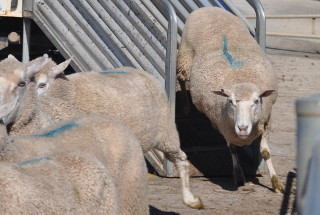Dispatching healthy sheep to abattoirs or saleyards

With strong lamb and sheep prices, producers may be tempted to sell livestock that are not fit to load or sell.
Things to consider when checking sheep before loading or for selection for sale include:
- Is it lame (that is, can the sheep walk normally, bearing weight on all legs)?
- Is it too weak to undertake the journey? (for example, is it emaciated or visibly dehydrated)?
- Is it suffering from severe visible distress or injury, including diseases such as flystrike?
- Is it suffering from any condition that could cause it increased pain or suffering during transport (for example, cancers, growths, active mastitis)?
- Is it blind in both eyes?
- Is it in late pregnancy?
Animal welfare is a shared responsibility across all stakeholders in the chain of responsibility.

If you answer ‘yes’ to any of the above questions, the animal is not fit to load, and should be treated or euthanised on farm. The fit-to-load guide is available from departmental offices, stock agents and Meat & Livestock Australia.
Sheep suffering from a notifiable disease such as lice, footrot, ovine Johne’s disease or ovine Brucellosis may be sent directly to abattoirs for slaughter. However, these animals must still be fit to load, and the above questions considered.
Animal welfare is a shared responsibility across all stakeholders in the chain of responsibility. Abattoirs and saleyards have a duty of care to the livestock they receive.
If the welfare of received livestock is compromised, these livestock will be managed according to policy and procedures, which may include reporting to the department for investigation.
Attention to consigning healthy sheep for transport protects the image of Victoria’s and Australia’s sheep and livestock industries, ensuring that our markets remain open.